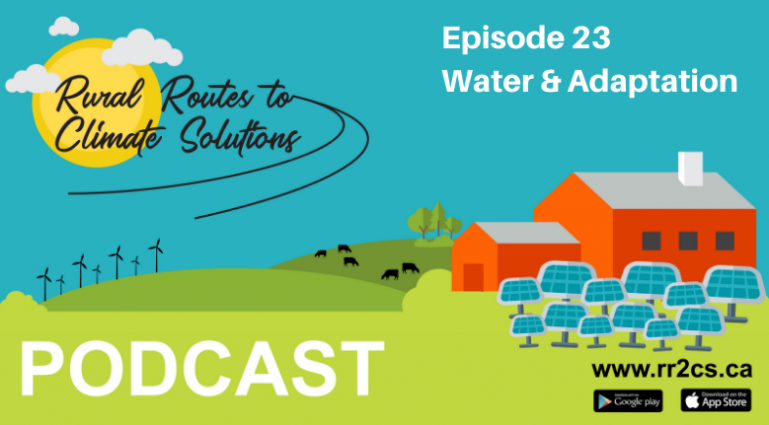Podcast: Play in new window | Download
Subscribe: RSS
Dr. Sauchyn is a professor at the University of Regina and the director of the Prairie Adaptation Research Collaborative (PARC). His research interests include climate and hydrology over the past millennium, which pretty much means he studies the history of water on the Prairies. He shared some of his knowledge with us on the ways people of the Prairies have adapted to live out here. We know that the Prairies can be a harsh place, a place full of extremes. One day beautiful and warm and the next day… well, not!
So what kind of adaptation took place in the Prairies, a place that shares a similar climate to Siberian and Mongolia, for it to become a renowned location for agriculture? Or maybe you’d like to hear about what benefits the Prairies has to offer agriculture? Sure it can be a harsh place, but it does have its good points as well. Even if you don’t like snow, it’s still a great natural way to store moisture until the growing season. As Dr. Sauchyn says in this episode, there are benefits to a cold winter (we know it doesn’t feel that way sometimes…often….a lot).
Dr. Sauchyn touches on what conditions we may have to adapt to in the future. With changes to the climate, we’re always going to need to adapt in some way. Agriculture itself is always a changing game and our best tool is adaptation.
Highlights:
(0:53) Who is Dr David Sauchyn and what is PARC?
(1:23) What is the difference between climate change and climate variability? Change is more a trend or tendency over a long period of time. Variability is a change year to year or decade to decade. Variability surrounds the trend.
(13:05) What are the sources of moisture in Alberta? The Rocky Mountains, which is also a major source of moisture for Saskatchewan and some parts of Manitoba.
(16:32) Snow melt, how dependent are we on it? Hugely! Almost half our annual precipitation and it’s a natural form of storage to help recharge soil moisture.
(20:31) Climate models suggest we’ll have more water in the future, but it may come in winter so in that case, what use is it to growing? Especially, if more of it comes as rain.
(23:18) We are putting the hydrological cycle on steroids. Dry and wet are natural but now they’re occuring in a warmer, wetter climate so they’re being amplified.
(43:15) The Prairie Farm Rehabilitation Administration (PFRA), what was it and should it come back?
Useful Links:
Prairie Adaptation Research Collaborative
https://www.parc.ca
Prairie Farm Rehabilitation Administration
https://www.thecanadianencyclopedia.ca/en/article/prairie-farm-rehabilitation-administration
Prairie Climate Centre (interactive map)
http://prairieclimatecentre.ca/
Alberta Tomorrow (interactive map)
https://albertatomorrow.ca/
Want to learn more? Listen to Adaptive Agriculture with Alberta agricultural producers Heather Kerschbaumer, Amber Kenyon and Kris Vester and Working Beavers with Dr. Glynnis Hood on how beavers can be part of a water management strategy.

